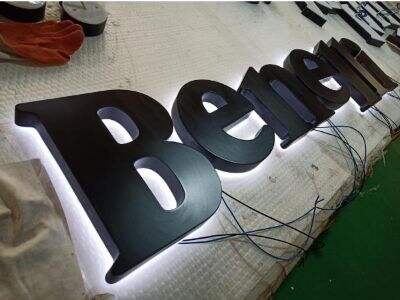Diving into the vast realm of custom signs, we can find a spectrum of colors, figures and texts that are yet to be found. Advertising: From the Signs on our Favorite Store Doors to the Billboards on the Highway these are all Custom Signs Do you know what goes through the mind of someone designing a custom sign.
Everything you need to know: Materials and Styles a Comprehensive Guide
Wood: Wood is the top consumer choice for personalized signs as it is long-lasting, versatile and relatively easy to personalize. Designs often resembling those of the turn of the century or used as a sign in any wooden style, this one can be painted, stained or engraved to create this one-of-a-kind look.
Metal And Then There Is Metal Metal signs are often the preferred choice for custom signage because they can be used indoors or outdoors and will endure the wear for years to come. custom store signs are usually created from such materials as aluminum, steel or bronze which can then be etched, engraved or painted to provide a really contemporary and stylish appearance.
Acrylic: These signs are lightweight, sturdy, and come in a variety of colors and finishes. Acrylic Glass Signs Typically used for indoor signs, acrylic glass can be custom cut into just about any shape you need.
Styles- custom signs have many styles traditional to the modern, bold to understated etc. Some common styles include
Classic: Classic signs are most likely to include timeless text, colors as well as craftsmanship that creates sensations of nostalgia and also add Event Listener.
Small and sleek: Modern style signs are clean with minimalistic touches, lots of simple lines, bold colors coupled with contemporary fonts.
Vintage: Vintage 3d signs for businesses are reminiscent of classic designs seen in old-timey commercials and have a distressed finish, faded color, and antique font.
General advice for effectively designing signs
Less Is More: A less is expecting sign may affect it to leave a cleaner sign and increasingly great scrutinizing. Use a clean and simple design that clearly communicates with the great message you want to get across.
Contrasting Colors: Color is helpful in standing out and a proper color sign can help with this. Go with the colors that resonate with one another and make a good combination.
Think placement: Where will your sign be located, and the design around it? When your sign is either notably small or too big for the space where it was intended to be displayed, it can lose its effect.
Applications for custom signage
Retail Signage: Retailers typically use a high volume of custom signs to draw in customers and advertise goods or services. Some of the more prevalent types of retail signs include storefront signs, window signs, or promotional banners.
Custom Signs Wayfinding signage is another feature for custom signs; guiding people to where they need to be in a large building or complex. Wayfinding signs include directional signs, maps and room identifiers.
Custom signage for events: When hosting an event, you can order custom signs to inform your guests and/or advertise sponsors or vendors Event Signage: Banners, posters, table displays.
The Secret to Great Sign Design
Creating a custom sign that says this, and has the message pop is an art that youll get better at with every single one; doing it right takes practice. By selecting the right materials and designs, along with some practical tips and application for custom 3d signs are ready to reveal the secrets of sign design success.

